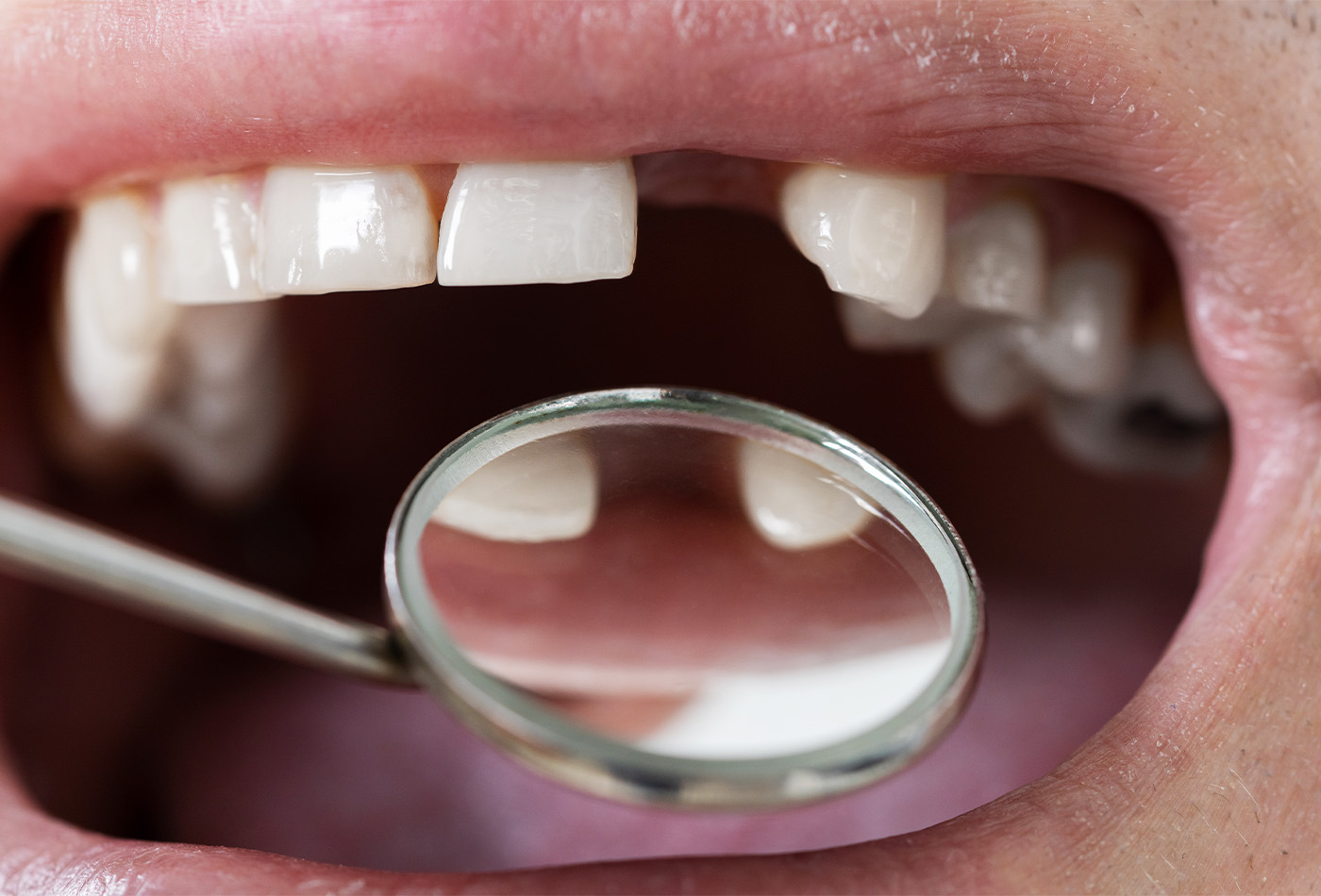
Restoring Your Smile: How to Replace a Missing Tooth?
Does a missing tooth need to be replaced? It does more than you’d think. Losing a back tooth already makes chewing harder, and smiling just doesn’t feel as confident if the front tooth goes missing. If you’d like to find out for yourself how to replace a missing tooth, plus the causes and preventative measures, this article will be a great guide to help restore your smile.
Common Causes of Tooth Loss
Although it seems odd, tooth loss can occur, and for a good variety of reasons. It is important to learn of these causes:
Dental Decay
Dental caries, often referred to as cavities or decay, occur due to the accumulation of dental plaque. This bacterial biofilm gradually erodes the tooth enamel, often manifesting as sharp, intermittent pain. Without prompt intervention, this process can culminate in tooth loss.
Gum Disease
Periodontal disease or gum disease is a progressive infection of the gingival tissue anchoring the teeth, often initiates as gingivitis. This precursor condition is characterized by inflamed and bleeding gums surrounding the teeth. Unchecked progression from gingivitis can escalate to periodontitis, a severe form of gum infection. Over time, periodontitis can compromise the structural integrity of the dentition, ultimately leading to tooth loss.
Trauma or Injury
Dental trauma, while less common, can also lead to tooth loss. This category includes various injuries from sports-related accidents, falls, or motor vehicle accidents, which can induce complex complications leading to the loss of teeth.
Congenital Absence of Teeth
In rare instances, congenital conditions such as anodontia can lead to tooth loss. In these cases, individuals are genetically predisposed to lack several teeth from birth. The resulting dental vacancies can cause misalignment of the jaws, or “teeth migration,” and pose challenges for routine functions.
Tooth Replacement Options: An Overview
Embarking on the path to reclaim a complete smile starts with a thorough comprehension of the diverse alternatives for tooth replacement.
- Dental Implants
Regarded as the most durable tooth replacement solution, dental implants are highly sought after. The procedure initiates with the surgical placement of a titanium post, which mimics the role of a natural tooth root. Once osseointegration occurs — the fusion of the post with the jawbone — a dental crown is affixed to the post. This prosthesis replicates the function and aesthetics of a natural tooth, often undetectable except under professional scrutiny.
- Dental Bridges
As a non-surgical alternative, dental bridges retain a substantial popularity. A bridge comprises a pontic, or artificial tooth, bookended by dental crowns meticulously matched to the adjacent healthy teeth. These crowns anchor the pontic, effectively restoring both aesthetics and functionality. The design of dental bridges varies depending on the location and number of missing teeth.
- Partial Dentures
Partial dentures, another non-surgical solution, offer the convenience of removability for improved oral hygiene. Constructed from metal or acrylic, these appliances feature a framework that supports the artificial teeth and clasps onto the neighboring healthy teeth. Although less expensive, partial dentures may compromise on stability and comfort compared to other options.
- Complete Dentures
In cases of complete tooth loss in an arch, the dental practitioner may recommend complete dentures. These custom-designed prosthetic devices comprise an entire set of artificial teeth, designed to fit snugly within the oral cavity and replicate a natural appearance. Complete dentures restore both aesthetics and masticatory function, but may necessitate occasional adjustments and relining to maintain a comfortable fit.
Choosing the Right Tooth Replacement Option for You
Selecting the appropriate tooth replacement solution is crucial. To choose the right one, consider the following steps:
Assess Your Needs and Goals
Allocate sufficient time to introspectively assess your unique needs and aspirations. Contemplate aspects such as financial implications, longevity, aesthetics, and comfort of the prostheses. Investing time in exploring various services, and examining the advantages and potential drawbacks of each option, will help you form an informed perspective.
Consult With a Dental Professional
Armed with your fundamental understanding, the final and crucial step involves scheduling a consultation with a dental professional. As irreversible procedures demand expert guidance, entrusting your dental concerns to a specialist ensures optimal outcomes. They will comprehensively evaluate factors including your present oral health status, occlusal harmony, and other dental considerations you may not have initially identified.
Conclusion
Learning how to replace a missing tooth is an essential first step to restore your smile and maintain your oral health. If you need to consult with a dental professional, our team of professional dentists at NYC Dental Smiles are here to help you reclaim your smile and confidence!
Source
5 Dental Options for Replacing Missing Teeth. (2018, August 15). Abbadent Dental and Implants Dubuque Iowa. https://www.abbadent.com/blog/5-dental-options-for-replacing-missing-teeth/
Your Options for Damaged or Missing Teeth. (2022, July 6). Verywell Health. https://www.verywellhealth.com/restoration-definition-of-restoration-1059434